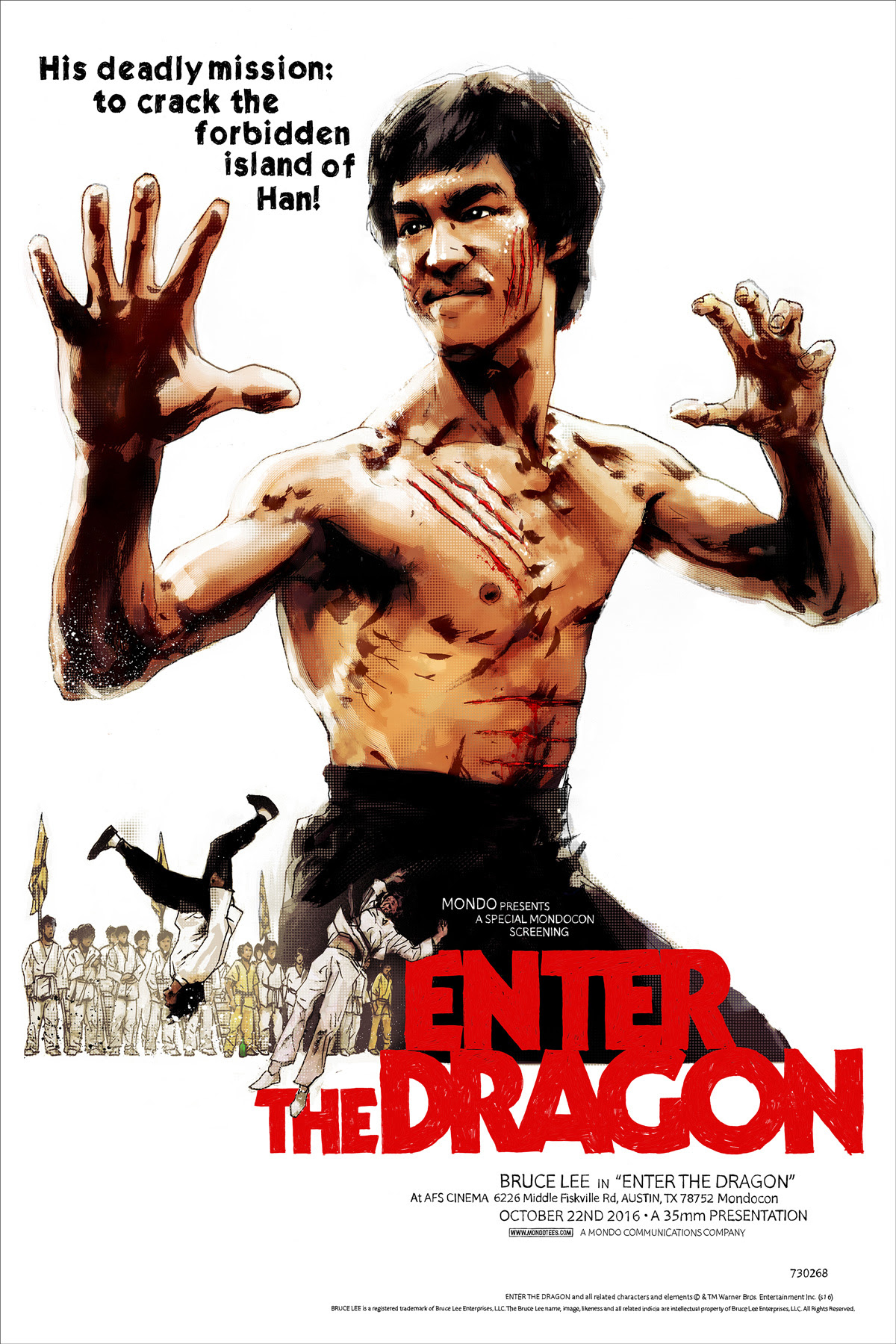9 Enter the Dragon – 龍爭虎鬥 (Lóngzhēnghǔdòu)
Bryant
simplified Chinese: 龍爭虎鬥; pinyin: Lóngzhēnghǔdòu
Enter the Dragon

“Enter the Dragon”, Jìnrù lóng, 龍爭虎鬥
Licensed by Swank Motion Pictures
The 1973 martial arts movie Enter the Dragon (龍爭虎鬥) is regarded as one of the best and most important martial arts movies of all time. Bruce Lee plays his last film part before his tragic passing in the Robert Clouse-directed film. The story centers on Lee’s character, a martial artist by the name of Lee, who is invited by an intelligence agency to compete in a martial arts competition on an isolated island held by a reclusive businessman suspected of engaging in illegal activity. As Lee discovers the reason for the competition, he engages in combat with a number of foes before facing the villain in a thrilling conclusion. Enter the Dragon is known for its creative use of martial arts styles and combat choreography, as well as its examination of themes like betrayal, vengeance, and the conflict between good and evil. It’s hard to overstate the movie’s influence on martial arts cinema and popular culture as a whole given the numerous filmmakers and martial artists who credit it as a significant inspiration. Chinese pop culture has been pretty influenced by Enter the Dragon, especially in how it depicts Chinese martial arts and Chinese culture. The movie includes a number of well-known Chinese martial artists in its cast, including Bruce Lee and Sammo Hung. It contains a variety of martial arts styles, including Wing Chun, Karate, and Jeet Kune Do. As a result of this, martial arts became pretty well-liked in China and other countries, and Chinese culture and customs were more understood and appreciated. Chinese culture, which places a high value on moral conduct and personal virtue, is shown in the film’s themes of honor, justice, and self-discipline. Specifically, Lee’s character portrays many of these qualities, and his portrayal in the movie has established him as a legendary figure in Chinese martial arts and culture. The movie also includes aspects of Chinese philosophy and spirituality, such as Wu Wei, a Taoist idea that stresses the value of effortless action and unplanned behavior. The global film industry has also been significantly impacted by Enter the Dragon, which has also had a huge effect on a huge number of filmmakers and martial artists worldwide. The movie’s combat sequences are widely regarded as some of the best in movie history, and it revolutionized the action genre with its creative use of camera angles and techniques. Additionally, the movie assisted in popularizing Chinese martial arts in the West and has since gone on to become a classic of both Chinese and American filmmaking. In conclusion, the martial arts classic Enter the Dragon made a big impression on both Chinese popular culture and the international cinema business. Incorporating Chinese philosophy and spirituality, portraying Chinese martial arts, and emphasizing themes of honor and self-discipline in the movie have all contributed to a greater global understanding and respect of Chinese culture.
Citations:
Howard, A. R. (2022, August 19). ‘enter the dragon’: Thr’s 1973 review. The Hollywood Reporter. Retrieved March 12, 2023, from https://www.hollywoodreporter.com/movies/movie-news/enter-dragon-review-1973-movie-1129360/#!
Jackson, M. (2018, October 16). 11 legendary facts about enter the dragon. Mental Floss. Retrieved March 12, 2023, from https://www.mentalfloss.com/article/559362/facts-about-enter-the-dragon-bruce-lee
Black Belt Magazine. (2022, February 22). Bruce Lee Movies: Enter the dragon, seen through the eyes of a martial arts movies expert. Black Belt Magazine. Retrieved March 12, 2023, from https://blackbeltmag.com/bruce-lee-enter-the-dragon

